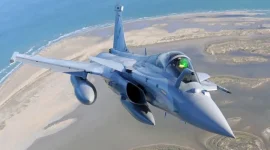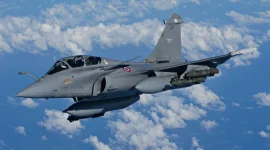- Views: 2K
- Replies: 28
India's acquisition of the Rafale M naval fighter jet is poised to give the Indian Navy a significant edge over China's carrier-based aircraft, according to an Indian Navy official.
In a candid assessment, the official stated that the Rafale M significantly outclasses China's modernized J-15B and J-15D fighters in all key combat capabilities.
The Rafale M, a naval variant of the renowned French Rafale fighter, is purpose-built for carrier operations. It boasts advanced avionics, weaponry, and a robust airframe designed to withstand the rigors of naval combat.
In contrast, the J-15B and J-15D, derivatives of the Soviet-era Sukhoi Su-33, continue to grapple with inherited design flaws despite significant Chinese investment in modernization.
"The J-15 series, despite its upgrades, carries the legacy of the Su-33's problems, which have been well-documented," the official noted. "These include issues with the aircraft's weight, fuel efficiency, and operational reliability."
The J-15 was reverse-engineered and modified from a prototype of the Su-33 acquired from Ukraine. However, fundamental design challenges persist, impacting its overall combat effectiveness.
The official highlighted that India's decision to opt for the MiG-29K over the Su-33 for its aircraft carriers was influenced by similar reliability and performance concerns that even the Russian Navy faced. The Russian Navy's eventual transition from the Su-33 to the MiG-29K further underscores the unresolved problems with the former.
China has acknowledged these shortcomings and is now developing the J-35, a fifth-generation carrier-based fighter, with the aim of phasing out the J-15 variants. The J-35 is expected to bring stealth capabilities, enhanced avionics, and superior combat performance to the People's Liberation Army Navy (PLAN).
However, despite the J-35's development, the PLAN continues to induct J-15B and J-15D aircraft, highlighting their continued efforts to expanding their naval aviation capabilities. These jets, however, still carry the design limitations of the Su-33, hindering their effectiveness against modern adversaries like the Rafale M.
The Rafale M's superiority in areas such as radar, electronic warfare, payload capacity, and operational range provides the Indian Navy with a strategic advantage in potential naval engagements. Its compatibility with India's aircraft carriers, coupled with its proven combat record in various international operations, positions it as a formidable asset in the region.


